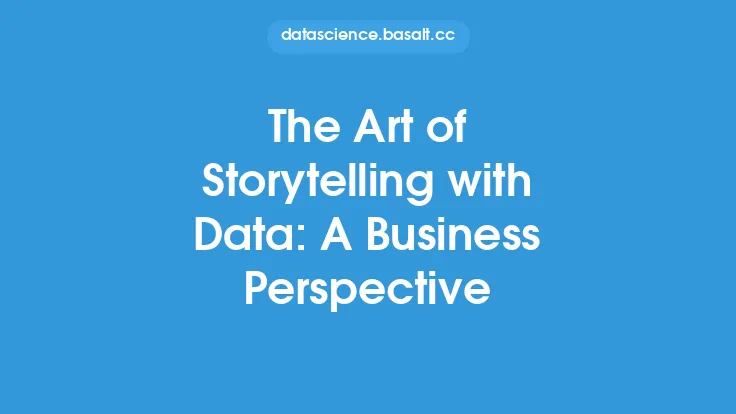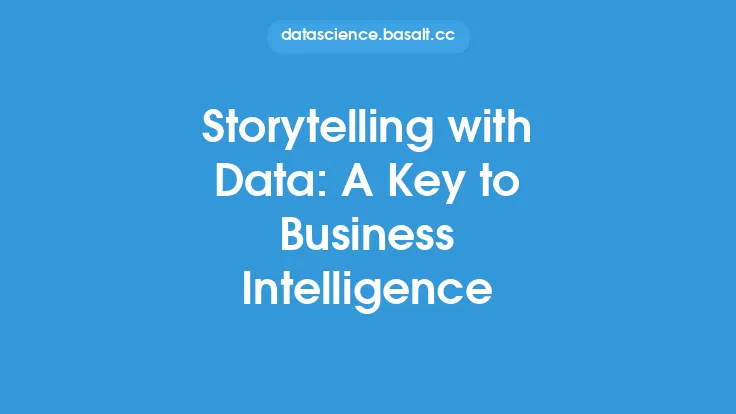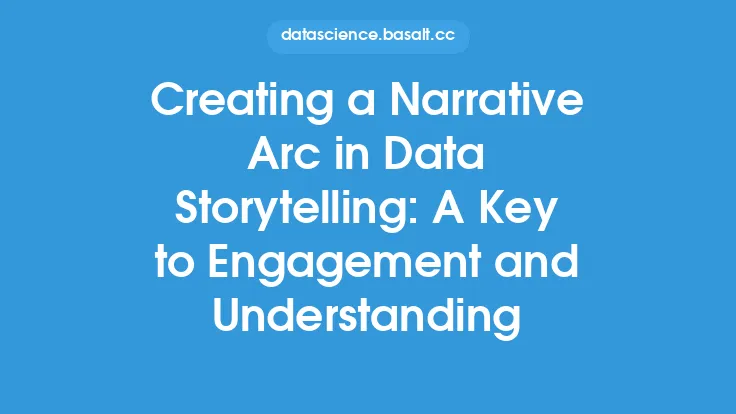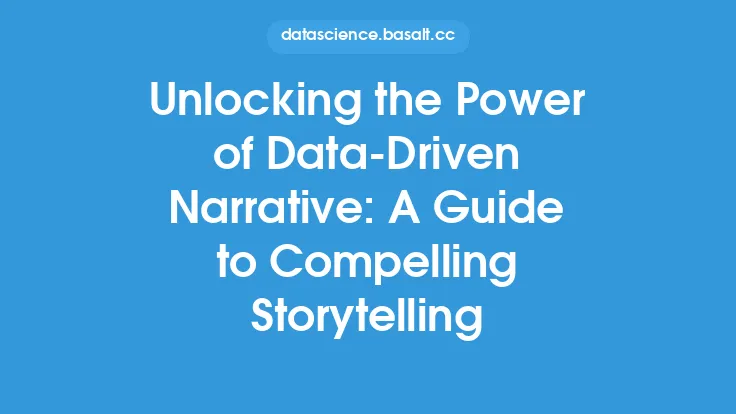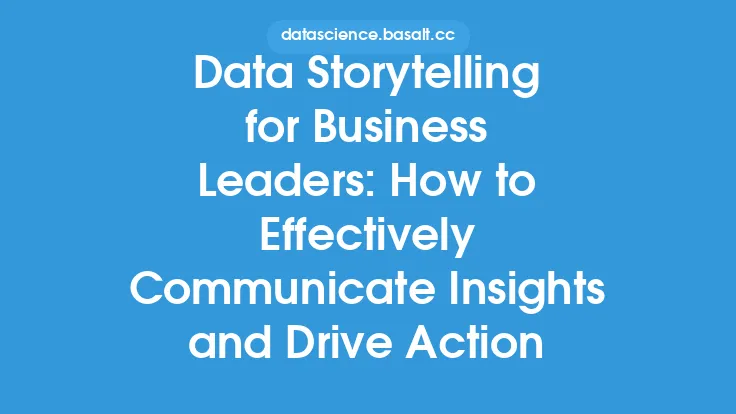In today's data-driven world, the ability to extract insights from complex data sets and communicate them effectively is crucial for businesses, organizations, and individuals alike. Data storytelling is an emerging field that combines the principles of data analysis, narrative techniques, and visualization to convey insights and drive decision-making. At its core, data storytelling with a purpose is about using narrative to drive insight, and this requires a deep understanding of the audience, the data, and the story being told.
Introduction to Data-Driven Narrative Techniques
Data-driven narrative techniques are a set of methods and tools used to create compelling stories from data. These techniques involve using data visualization, statistical analysis, and narrative structures to convey insights and trends in the data. The goal of data-driven narrative techniques is to create a story that is both informative and engaging, and that resonates with the audience. Some common data-driven narrative techniques include using anecdotes and examples to illustrate key points, creating interactive visualizations to explore the data, and using statistical models to identify trends and patterns.
The Importance of Purpose in Data Storytelling
Purpose is a critical component of data storytelling, as it provides the context and direction for the story being told. A clear purpose helps to focus the narrative, identify the key insights and trends, and create a compelling story that resonates with the audience. Without a clear purpose, data storytelling can become meandering and ineffective, failing to convey the insights and trends in the data. To create a purpose-driven data story, it's essential to define the goals and objectives of the story, identify the key audience and stakeholders, and determine the key insights and trends that need to be communicated.
Using Narrative to Drive Insight
Narrative is a powerful tool for driving insight in data storytelling, as it provides a framework for organizing and presenting the data in a way that is both informative and engaging. A well-crafted narrative can help to identify patterns and trends in the data, create a clear and concise story, and convey the insights and recommendations to the audience. Some common narrative techniques used in data storytelling include using a clear and concise structure, creating a compelling storyline, and using visualizations and anecdotes to illustrate key points.
Technical Aspects of Data Storytelling
From a technical perspective, data storytelling involves a range of tools and techniques, including data visualization, statistical analysis, and data mining. Data visualization is a critical component of data storytelling, as it provides a way to present complex data in a clear and concise manner. Some common data visualization tools include tables, charts, and graphs, as well as more advanced tools like interactive dashboards and geospatial visualizations. Statistical analysis is also essential in data storytelling, as it provides a way to identify trends and patterns in the data, and to create predictive models that can inform decision-making.
Best Practices for Data Storytelling
To create effective data stories, it's essential to follow best practices that ensure the story is both informative and engaging. Some best practices for data storytelling include using a clear and concise narrative structure, creating interactive visualizations to explore the data, and using anecdotes and examples to illustrate key points. It's also essential to know the audience and tailor the story to their needs and interests, and to use a range of tools and techniques to convey the insights and trends in the data.
Common Challenges in Data Storytelling
Despite the many benefits of data storytelling, there are several common challenges that can arise. One of the biggest challenges is creating a clear and concise narrative that resonates with the audience, and that conveys the insights and trends in the data. Another challenge is dealing with complex or ambiguous data, and creating a story that is both informative and engaging. To overcome these challenges, it's essential to have a deep understanding of the data, the audience, and the story being told, and to use a range of tools and techniques to convey the insights and trends in the data.
Future Directions in Data Storytelling
As the field of data storytelling continues to evolve, there are several future directions that are likely to emerge. One of the most significant trends is the use of artificial intelligence and machine learning to create automated data stories, and to identify trends and patterns in the data. Another trend is the use of virtual and augmented reality to create immersive data stories, and to convey the insights and trends in the data in a more engaging and interactive way. As data storytelling continues to evolve, it's likely that we will see new and innovative ways to convey insights and trends in the data, and to drive decision-making and action.
Conclusion
Data storytelling with a purpose is a powerful way to extract insights from complex data sets and communicate them effectively. By using narrative to drive insight, and by following best practices for data storytelling, it's possible to create compelling stories that resonate with the audience, and that convey the insights and trends in the data. As the field of data storytelling continues to evolve, it's likely that we will see new and innovative ways to convey insights and trends in the data, and to drive decision-making and action. Whether you're a business leader, a data analyst, or simply someone who wants to make sense of the world around you, data storytelling with a purpose is an essential skill that can help you to achieve your goals and make informed decisions.

